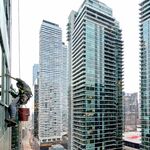steveintoronto
Superstar
When Toronto has Copenhagen's climate, societal norms, geography and academic levels of the general population, it might then be apt to cycle through the winter, as I did in London many times (have only been in other European nations in the Summer):
Perhaps some cycle-warriors weren't aware of the massive number of vehicle accidents in Toronto yesterday? Once the temps go below freezing, and the snow hits, the risk factors change radically.
Did I mention the 180% sales tax on cars in Denmark perchance? Well Skagerrak Jack! But that is about to be relaxed...to 100%:
And Copenhagen drivers are far better than Toronto ones, not to mention everything about Copenhagen transit infrastructure is pro-cycling:
This is their massive RER equivalent that Toronto can only dream and argue about.

The S-train network - with 2 Metro lines at bottom right.
It's pointless to think Toronto could ever match Danish, Dutch, and most of Europe's cycling infrastructure and accommodation. Toronto has enough of a challenge meeting other Cdn cities, let alone US ones.
By all means push cycling infrastructure, but stop the hysterical claims of being able to do what they do. Unless you want to move Toronto south, eliminate most of the present occupants, and start all over again.
We're stuck with Toronto mentality, and far better to aim for what is achievable than aim at the sky and miss.
https://weather-and-climate.com/average-monthly-Rainfall-Temperature-Sunshine,copenhagen,DenmarkCLIMATE: AVERAGE MONTHLY WEATHER IN Copenhagen, Denmark
Copenhagen experiences unstable and changing weather patterns in all four seasons, as well as temperatures about 5 degrees higher than average for its latitude worldwide. The main reason for this warmth is the Atlantic Gulf Stream. Precipitation is moderate throughout the year, with a small peak during June to August. Snowfall occurs mainly from late December until early March, but snow cover seldom lasts long. Rain during these months is as common as snow, and the average temperatures for the winter months is near the freezing point.
Perhaps some cycle-warriors weren't aware of the massive number of vehicle accidents in Toronto yesterday? Once the temps go below freezing, and the snow hits, the risk factors change radically.
Did I mention the 180% sales tax on cars in Denmark perchance? Well Skagerrak Jack! But that is about to be relaxed...to 100%:
https://www.bloomberg.com/news/articles/2017-08-29/soon-cars-in-denmark-will-only-be-taxed-at-100Soon, Cars in Denmark Will Only Be Taxed at 100%
By
Peter Levring
August 29, 2017, 9:08 AM EDT
Copenhagen’s reputation as a cyclists’ paradise isn’t just due to a lack of hills: Registration duties of up to 180 percent mean Denmark is one of the most expensive countries in which to buy a new car.
That may be about to change. Under proposals unveiled Tuesday, the tax rate is to be lowered dramatically -- to just 100 percent.
The initiative is part of efforts by Prime Minister Lars Lokke Rasmussen’s center-right government to expand the labor force by making a monthly salary more attractive. [...]
And Copenhagen drivers are far better than Toronto ones, not to mention everything about Copenhagen transit infrastructure is pro-cycling:
http://www.copenhagenize.com/2016/11/massive-passenger-increase-after-bikes.html[...]In order to meet the demand, DSB redesign the compartments on all their trains and created so-called Flex Zones with fold up seats and bike racks beneath each seat. They adjusted the seating on all trains, as seen in the graphic, above, and now every train has a capacity for 60 bicycles. [...]
This is their massive RER equivalent that Toronto can only dream and argue about.

The S-train network - with 2 Metro lines at bottom right.
It's pointless to think Toronto could ever match Danish, Dutch, and most of Europe's cycling infrastructure and accommodation. Toronto has enough of a challenge meeting other Cdn cities, let alone US ones.
By all means push cycling infrastructure, but stop the hysterical claims of being able to do what they do. Unless you want to move Toronto south, eliminate most of the present occupants, and start all over again.
We're stuck with Toronto mentality, and far better to aim for what is achievable than aim at the sky and miss.











